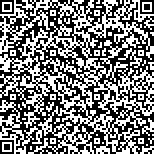下载中心
优秀审稿专家
优秀论文
相关链接
摘要

随着遥感技术的发展,出现了从两个或两个以上的方向对同一目标进行观测的方式,即多角度遥感。多角度遥感有助于提高植被生物物理参数的反演精度,可为生态环境和气候变化研究提供更好的数据支持。本文围绕多角度光学遥感,总结了多角度遥感的发展、特点与优势,回顾了相关概念,系统总结了从地面到航空、航天的多角度观测手段,以及辐射传输模型、几何光学模型、混合模型、计算机模拟模型等多角度遥感模型的发展。在此基础上,梳理了多角度遥感在反照率、植被参数、气溶胶反演及冰冻圈遥感中的应用。最后,对多角度光学定量遥感的发展趋势及研究方向进行了展望。与单一角度遥感相比,多角度遥感提供了角度维信息,提高了遥感对地球表层参数的获取能力。随着星机地不同平台的多角度遥感观测手段越来越丰富,未来多角度遥感的主要研究方向集中在发展复杂地表多角度反射/辐射模型,增强多角度遥感数据预处理能力和提高多源数据综合应用能力等方面。
With the development of remote sensing technology, two or more viewing directions become available for the same target, and thus a new research field – multi-angle remote sensing appears. Compared with the traditional remote sensing which only views the ground surface in one direction, multi-angle remote sensing provides angle-dimensional information and improves the capability of obtaining vegetation structure parameters. It helps to improve the retrieval accuracy of key biophysical parameters and provides better data support for the research of ecological environment and climate change. After a detailed analysis of the publications in multi-angle remote sensing, we summarize the basic concepts, characteristics, advantages and developments of multi-angle remote sensing. Multi-angle remote sensing platforms vary from ground-based, airborne to spaceborne observation equipment. The first ground-based observation equipment appeared in 1952. All the ground-based equipment is classified as the fixed field of view mode or the changeable field of view mode. For the airborne or spaceborne platforms, only the fixed field of view mode is acceptable due to the heterogeneity of the land surfaces. With the development of UAV technique, the airborne multi-angle remote sensing is becoming more and more popular due to its flexibility and high spatial resolution. The multi-angle models play important roles in parameters inversion. Classic multi-angle remote sensing models include radiative transfer models, geometric optical models, hybrid models, and computer simulation models. They are all physical models which are developed based on some assumptions and theoretical analysis. Semi-empirical models combine the advantages of the empirical model and the physical model, as a result, they are simple and stable in inversion. The most widely used semi-empirical model is the linear kernel driven model used by the operational MODIS BRDF/albedo products algorithm. With the development of observing equipment and models, multi-angle remote sensing is widely used in many applications. Due to the anisotropic reflection characteristic, land surface albedo can only be retrieved by multi-angle remote sensing with high accuracy. Multi-angle remote sensing shows great potentials in vegetation structural parameters inversion which include the clumping index, LAI, FVC profile and canopy height. It has been found to be superior in vegetation type identification than the traditional vertical observation. Multi-angle remote sensing is also very useful in the cloud and aerosol parameters retrieval, such as the cloud albedo, height and types, as well as the aerosol optical depth and shapes. Large difference of optical scattering between the cloud and ice/snow in different viewing directions makes the identification of these covers easier with multi-angle remote sensing. The sea ice roughness can also be retrieved by multi-angle observations. In the last of this paper, we put forward the prospects of multi-angle optical quantitative remote sensing. As the multi-angle remote sensing observation data based on spaceborne, airborne, and ground platforms become more and more abundant, the main research direction of multi-angle remote sensing in the future should focus on the following aspects: developing multi-angle reflection/radiation models for complex surfaces, enhancing the preprocessing capabilities of multi-angle remote sensing data, and promoting the comprehensive abilities of multi-source data integration in application, etc.

